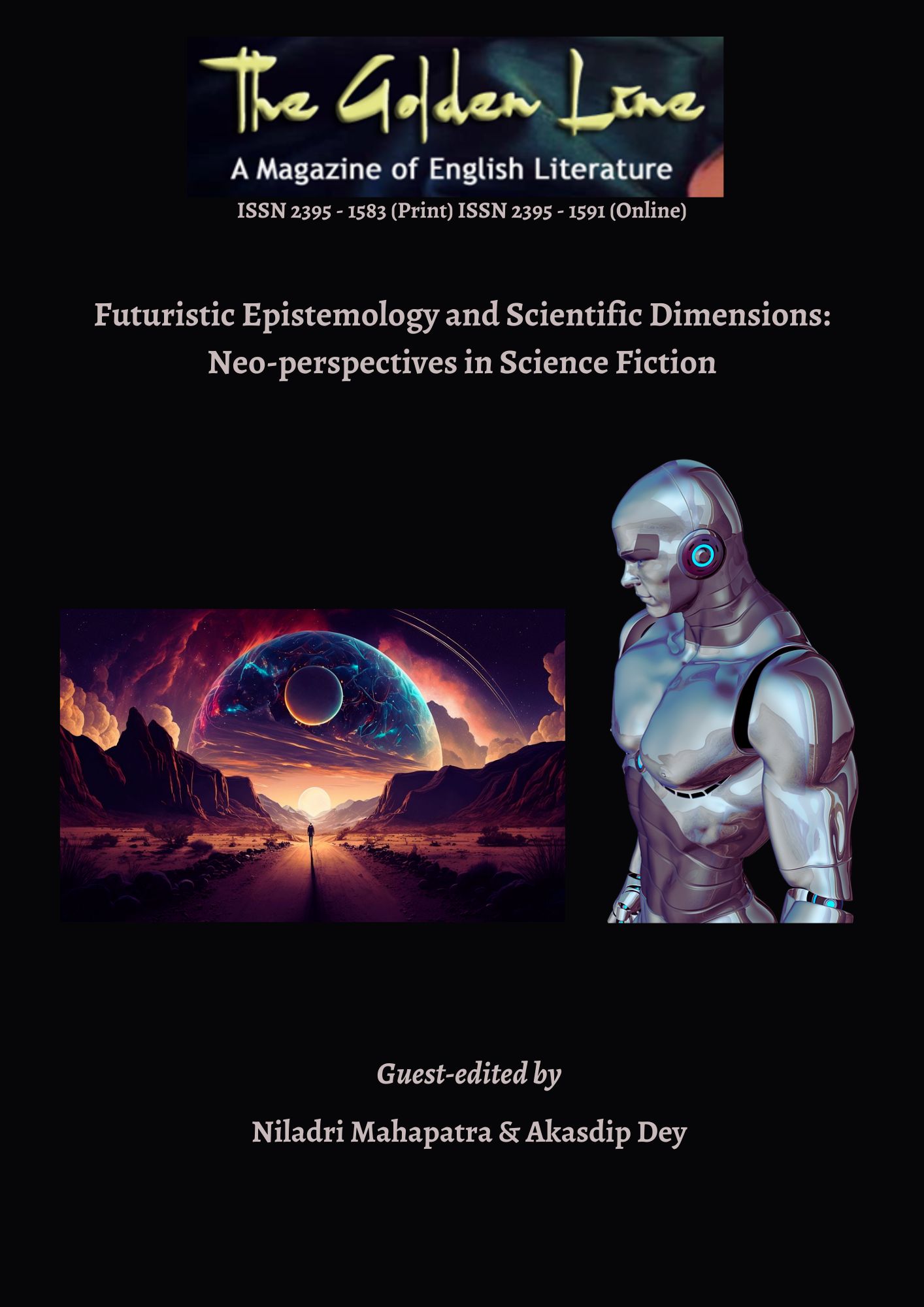Niladri Mahapatra
Sate Aided College Teacher, Dept. of English, Bhatter College, Dantan,
 Dr. Subhadeep Paul is an Assistant Professor, Department of English, School of Literature, Language and Cultural Studies, Bankura University, West Bengal. He has co-edited Anxieties, Influences & After: Critical Responses to Postcolonialism & Neocolonialism (Worldview Publishers, in association with Wimbledon Press, UK, 2009), authored Finite Sketches, Infinite Reaches (Writers Workshop, Kolkata, 2009), and was Co-Director of a Two-Year Major Research Project (2016-18) entitled “Discoursing the Homeless Elderly: Tropes, Desires, Containment” (funded by the I.C.S.S.R., in collaboration with The University of Swansea, UK). Beyond the Heteronorm: Interrogating Critical Alterities (Lexington Books | Rowman & Littlefield) is his forthcoming co-edited volume.
Dr. Subhadeep Paul is an Assistant Professor, Department of English, School of Literature, Language and Cultural Studies, Bankura University, West Bengal. He has co-edited Anxieties, Influences & After: Critical Responses to Postcolonialism & Neocolonialism (Worldview Publishers, in association with Wimbledon Press, UK, 2009), authored Finite Sketches, Infinite Reaches (Writers Workshop, Kolkata, 2009), and was Co-Director of a Two-Year Major Research Project (2016-18) entitled “Discoursing the Homeless Elderly: Tropes, Desires, Containment” (funded by the I.C.S.S.R., in collaboration with The University of Swansea, UK). Beyond the Heteronorm: Interrogating Critical Alterities (Lexington Books | Rowman & Littlefield) is his forthcoming co-edited volume.
NM: Greetings from The Golden Line! Thank you so much for sharing your valuable ideas and critical insights for our magazine.
You are an engaging and fervent academician, poet, and writer. Your writings and lectures, both physical and virtual, has been a source of inspiration for early and mid-level enthusiasts. Please tell us how you became interested in literature and theoretical studies?
SP: There are several influences I can think of when I go down memory lane. My early schooling in Dr, Graham’s Homes, Kalimpong, the liberating spirit of Durpin and Deolo, the snow-clad Himalayan ranges of West Sikkim, the gurgling river Teesta, an engaging class teacher, a rich fiction stack, a wild and wandering mind, summer vacations replete with Children’s Classics, and active readers in the extended family. I loved to read from a wide gamut of choices – cine mags to silverfish-infested longer fiction. My interest in theory developed much later during my undergrads and postgrads. I developed a keen interest in philosophical traditions, fictive writing, experimental poetry, and post-millennial branches of enquiry.
NM: The current era for us is shocking and uncertain for the huge amelioration of technoscience. We are confused about this metamorphosis and how it will shape our future. So, literary scholars have started to focus on this epoch of the Posthuman Condition to inspect how literary genres like science fiction negotiate with this. What are your views in this regard, with special reference to science fiction?
SP: Humankind has always been tech-savvy, based on their responsive situation to their milieus. It is regrettable that we might have lost several techno-positive aspects of pre-medieval cultures and civilizations. But the Digital and Internet Eras have revolutionized everything for the better or the worse. And that has been bolstered by the A.I. revolution that is presumed to reach a major scaler height around 2050/60. Science Fiction has always remained one of those experimental genres that has helped bridge the gap between fact and fiction. It has proved that to invent is to imagine the invention priorhand. There are intrinsic rhizomatic connections between science fiction, speculative fiction, and futurist fiction. This is true from H.G. Wells to Satyajit Ray. As a postmodern genre, science fiction collapses the boundary between the natural and the artificial. This trend is further augmented in posthumanism. The “SF topoi,” as Elana Gornel vividly describes in her article “Science (Fiction) and Posthuman Ethics: Redefining the Human” (published in the journal The European Legacy) is posited on multiple pivots: the human/animal evolutionary binary, non-biological subjectivity (AI), and the human/alien interaction. The critical negotiations of science fiction with these vital concerns are all too evident.
NM: One of the major themes of science fiction is animal and posthumanism as a leading contemporary theory urges to talk about the voices of these voiceless nonhumans. How do you connect science fiction and posthumanism with nonhuman aspects? Does SF really concern to develop relationship with different species?
SP: The entire category bracketed as “nonhuman others” has been a point of critical focus for quite some time now. With increased developments in biochemistry, genetic engineering, stem-cell research, cloning, the Human Genome Project, new paleontological findings, neuropsychological knowhow, etc., it is becoming increasingly easier to decode what you describe as “the voices of the voiceless creatures.” Research on matter, ethology, comparative psychology (i.e., studying animals to know more about humans), and especially zoonotic outcomes (given the learning lessons derived from the diabolical ramifications of the Covid 19 pandemic), should be massively instrumental in understanding the broad range of what constitutes cognitive freewill, sentience and drives that motivate and propel the animal kingdom.
NM: What is your favourite text that reflects the urgent need of what Derrida has called “the question of the animal?”
SP: Derrida’s proposition (also an accusation) that the entire gamut of Western philosophical traditions had deliberately forgotten the animal, is of considerable meaning, I feel. Whether it was Anna Sewell’s Black Beauty or Jack London’s The Call of the Wild or Rudyard Kipling’s The Jungle Book, ideas of empathy, equanimity and ethics were reconsidered in my subsequent readings of the same. It is important because the implication is that we have correspondingly sidelined and sanitized the truth value of the very animality of humans to suit humanist ideals and that of the Enlightenment. Derrida expressed his profound discomfort at having his post-bath naked frame being gazed upon by his cat Oscar. This “all too-present, staring feline” is important in the idea of the zoo, where the human-animal binary is intentionally pronounced. The motivation that propelled the construction of human zoos during the 19th and 20th centuries; basically, ethnological expositions also propelled the setting up of animal zoos. The imperialist perception and the anthropocenic perception align somewhere. It is the era where our bio-conservative efforts and our multispecies awareness must work towards understanding the areas where the human and the non-human converge and where their mutual boundaries must be respected. In both ‘in vivo’ and ‘in vitro’ contact with animals, we must keep these things in mind.
NM: In the non-human studies of the posthuman field, the name of Donna Haraway is oft-remembered. Her works like “Cyborg Manifesto,” “Companion Species Manifesto” are ground breaking in this regard. Moreover, she shows her despondency with the idea of posthumanism and embraces the need to address the non-human worlds for our survival. She adds, “the reason I go to companion species is to get away from posthumanism.” Could you enlighten us more about such approach of Haraway?
SP: I think Donna J. Haraway is a foundational thinker whose works are profoundly and meaningfully intersectional in their ideational engagements. Haraway has explored the subtleties concerning non-human engagements with other non-humans or with humans themselves. In Primate Visions: Gender, Race, and Nature in the World of Modern Science, she has criticized heterosexual ideology in primatology. She has found a similarity of First-World White tendency in the way both non-humans and indigenous folks were systematically erased from consideration. In both essays, namely “Manifesto for Cyborgs: Science, Technology, and Socialist-Feminism in the 1980s” and “A Cyborg Manifesto: Science, Technology, and Socialist-Feminism in the Late Twentieth Century,” we find feminist critiques of heteropatriarchy and high capitalism, where the idea of the cyborg comes as a juncture point to critique male/masculine biases within machine cultures and networked hegemonies. The role of technoscience upon the labour-market was premeditated by Haraway. She also ideated the sub-generic category of speculative fabulation to understand the evolutionary (or devolutionary) story of the Anthropocene. Like and alongside the ideas of Cary Wolfe, one might posit Haraway’s ideas as concrete innovations upon inter-creatural interactions. Haraway’s radical ideas, such as that of the ‘companion species,’ comments obliquely on inter-species cohabitation and co-evolution. It is lamentable how Haraway has been criticized as furthering a vague and questionable scientific methodology and that her epistemological framework is not rationally or meaning-wise tenable. But it should be understood that animal psychology and behavior is still inexact to human understanding, and so at this stage, we shouldn’t rule out the immense possibilities associated with animal sentience. We must treat these explorations with a grain of salt and with the humility of ignorance, keeping in mind Nietzsche’s famous phrase “das noch nicht festgestellte Tier,” i.e. “animals whose character has not yet been determined.” The Anthropocene is tethering on its own overweight and would topple over, unless we stop the crass binarization that allots a status of being to humans, reducing the animal kingdom to a collective of things and governed by unsighted logistics of kinesis.
NM: Animals appear in science fiction in several ways; even they have been represented as alien characters. Can an animal be an alien? Is it ethical to call animals as aliens?
SP: There are several observations, speculations, and conspiracy theories behind this. The hypothesis that alien-gods live among us as animals and threats regarding invasive alien species are perceptions that have stemmed from both popular imagination and quasi-scientific verities. Having said that, it becomes extremely pertinent to note the immense diversity and potential of the non-human kingdom and how species extinction has to be directly accrued to anthropogenic activities. The mating rituals of the pufferfish, the health preservation secrets of bees, the sentience of octopuses and dolphins, the memory of elephants, etc. need to be studied, given the raison d’ être behind their very existence. We cannot understand non-human species unless we learn to engage with what Donna J. Haraway described as their “significant otherness.” We must do that without othering them in artificial terms of classification. We might go back to Kantian ethics and the denial of animal moral status. We can go back to the Heideggerian perception that animals remain imprisoned at the level of beings. We might have to revise several onto-epistemic posturings in the light of posterity. But that again is not to de-prioritise or denaturalize the potential of the human in itself.
NM: In posthumanism, the most important thing which should be revived is the concept of language or what the language is. We should focus on how the non-humans like animals even plants are talking and representing themselves. If we could not make affinity with them by giving privilege to their languages through the communication, we are not yet posthumans. According to this point, Eva Meijer even argued that non-human animals speak and act politically. Visual artist and art historian Outimaija Hakala also supports such view and stands for an interspecies democracy. Do you support such interspecies preponderance?
SP: To not support interspecies preponderance or not promote interspecies democracy is to acknowledge remaining content with a quasi-truths or incomplete knowledge. We need to discover these unexplored terrains for both human and non-human good. We must remember that the strongest of the species can be exterminated in our hands. We must also remember that we might be eliminated by invisible agentic forms like viruses and bacteria.
NM: How much you are optimistic about a world without any binary of human – non human and with the possibility of cross-species understanding?
SP: With the rate of accelerated progress being made at this point of time, I am extremely hopeful about the outcomes in the near-future. But I am also hyper-cautious about possible overdrives that might turn out to be veritable catastrophes. Here’s hoping that the trajectories of our onto-epistemic convergences and divergences proceed in the right order.
NM: Thank you so much once again for your observations!
[Volume 5, Number 1, 2023]


